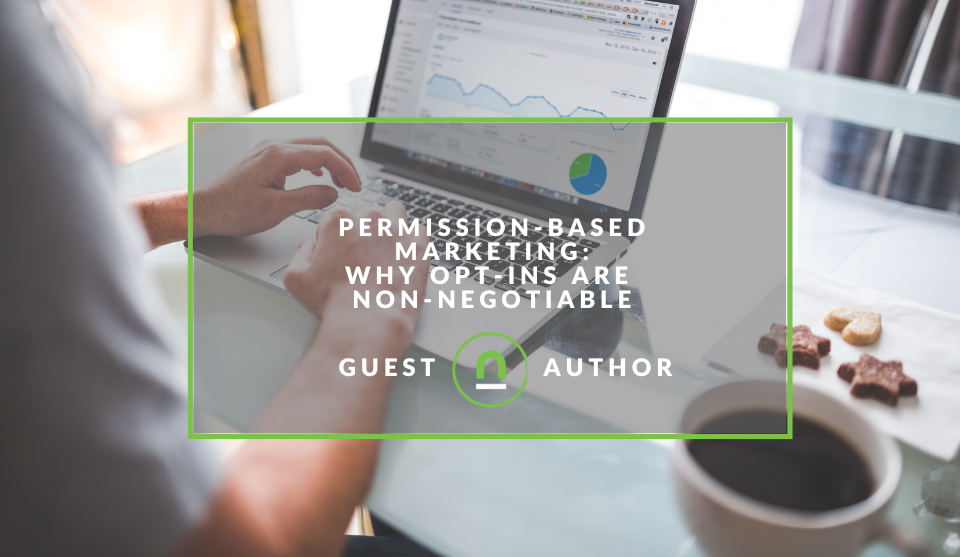Recent posts

Shopaholics
How to Choose A Perfect 2-Seater Couch for Small Spaces
28 February 2025

Money Talks
How Crypto Technology Continues To Revolutionise The Business World
27 February 2025

nichemarket Advice
How to Choose the Best Copy Trading Platforms for Maximum Return
24 February 2025

Mind, Body & Soul
A Guide to Cannabis Seeds in South Africa
21 February 2025
Popular posts
Extravaganza
Trending Music Hashtags To Get Your Posts Noticed
24 August 2018
Geek Chic
How To Fix iPhone/iPad Only Charging In Certain Positions
05 July 2020
Extravaganza
Trending Wedding Hashtags To Get Your Posts Noticed
18 September 2018
Money Talks
How To Find Coupons & Vouchers Online In South Africa
28 March 2019
Permission-Based Marketing: Why Opt-Ins Are Non-Negotiable
07 February 2025 | 0 comments | Posted by Alejandra Leyva in Industry Experts
Gaining the trust of your audience is crucial in online marketing, but this is often easier said than done when you don't have tangible assets that customers can see, smell, touch, and run to with complaints and deal with someone in person.
Most online businesses don’t have a physical office or storefront, so potential customers may understandably hesitate to commit.
Since anyone can set up an online store in minutes, how can they be sure you’re trustworthy?
The truth is you can't!
Trust is not formed overnight, and you will have to work hard to build up a track record and rapport with customers through consistent communication, offering value for free and engaging with customers through direct channels or social media.
So now that you have a game plan, there's one more hurdle: building a direct line of communication with a client through email, SMS, instant messaging, or community groups on chat apps requires one thing.
Permission!
Recognizing this, businesses who wish to remain relevant need to start taking steps to address it by prioritizing transparency and genuine engagement is an excellent way to build trust, which is essential for building a brand online.
It's not all about slapping a fancy cookie banner on your site and asking to deploy marketing tags; permission-based marketing goes a lot deeper than that.
What Is Permission-Based Marketing?
Permission marketing is a form of marketing in which the audience opts in to receive promotional messages. This starkly contrasts with traditional marketing methods, which generally focus on hijacking the audience’s attention.
David Haskins, CEO at WrongfulDeathLawyer.com, breaks it down. According to him,
“Conventional marketing typically pushes messages to the audience without their consent. Pop-up ads or TV commercials are a prime example of this,” he explains, adding that “While they are somewhat effective because the audience sees the message as intended, permission-based marketing is much more effective because the audience receives and engages with it willingly.”
Let’s explore how this works and what your businesses should be doing to implement permission-based marketing effectively.
The Power of Opt-Ins: Why They Matter
The key element of an opt-in is that the audience should be able to provide or withhold their consent to receive marketing material.
In modern marketing, this can take many forms, including typical examples like email and newsletter opt-in forms.
Here’s why this is so important:
Higher Engagement and Customer Satisfaction
Customers who opt in are interested in the business’s updates, so they are more likely to open emails, click on links, and engage with content. The key to achieving these results is ensuring you truly know your customers and offer them content they are genuinely interested in.
Increased Trust and Brand Loyalty
Making it easy for your audience to opt in or out shows that you respect them. This is an easy way to build trust and improve their perception of your brand's trustworthiness.
Compliance with Important Laws (GDPR, CCPA, CAN-SPAM)
Opt-ins are also vital because they help businesses stay on top of certain laws. The Protection of Personal Information ACT 4 of 2013 (POPIA) is the most important one for South African businesses. But if you aim to sell to customers outside of South Africa, you may have other laws to comply with.
Some of the most important ones include:
- The General Data Privacy Regulations (GDPR): The GDPR is the principal law that governs data privacy in the European Union. Under the GDPR, all businesses with European customers must get explicit consent from them before collecting, storing, or using any personal information.
- The California Consumer Privacy Act (CCPA): The CCPA is similar to the GDPR, but it applies to the State of California alone. The law gives people in
- California the right to know what personal information businesses collect, ask for it to be deleted, and stop businesses from selling their information.
- The Controlling the Assault of Non-Solicited Pornography and Marketing Act of 2003 (CAN-SPAM Act): This law in the U.S. regulates email marketing. It says that businesses must get permission before sending marketing emails.
Opt-ins make it easy to get this permission and also let customers unsubscribe if they want to stop receiving messages.
Best Practices for Effective Opt-In Strategies
So, how exactly do you implement opt-ins into your marketing? The answer largely depends on what marketing and tech tools and software you use.
If your website is built on WordPress, like about 44% of websites out there, then you’ll have numerous plugins to choose from. Every website builder or content management system will have similar options, too.
Here are some more practical tips to follow:
- Keep it Simple: Keep forms concise, clearly stating what subscribers get (e.g., newsletter, deals) while highlighting the benefits.
- Offer Incentives: Providing value through relevant incentives like discounts, exclusive content, or free trials can increase opt-in rates.
- Use Double Opt-ins: Customers often provide dud emails or make mistakes when they enter their details. Double opt-ins force the audience to double-check and correct any details they’ve provided.
- Offer Easy Opt-Outs: Respect subscriber choice with clear unsubscribe links in every email.
- Personalize Messaging: Segment audiences and tailor content based on preferences for increased engagement.
You can learn more about how to implement permission marketing and opt-in tactics by reading our guide to the top email opt-in tactics to grow your database.
Permission To Come Aboard
Permission-based marketing is a must. A well-executed opt-in strategy will help ensure that your audience buys into your messaging, which increases the chances of them buying a product or paying for a service.
With the tips we’ve shared, you can now get started implementing your opt-in strategy.
For more ideas on growing an online business, we recommend reading our guide to bootstrapping an e-commerce business.
Tell us your story
Would you like to write for nichemarket just like Alejandra has? Find out how to submit a guest post, and when you're ready, you can contact us.
Are you looking to promote your business?
Social media businesses can create their free business listing on nichemarket. The more information you provide about your business, the easier it will be for your customers to find you online.
Registering with nichemarket is easy; all you will need to do is head over to our sign-up form and follow the instructions. If you require a more detailed guide on how to create your profile or your listing, then we highly recommend you check out the following articles.
Recommended reading
If you enjoyed this post and have time to spare, why not check out these related posts and dive deeper down the rabbit hole that is marketing
You might also like
How to Choose the Best Copy Trading Platforms for Maximum Return
24 February 2025
Posted by Cornelia Ekong in nichemarket Advice
How to select a copy trading platform by evaluating key features, trader performance, risk management tools, and costs to maximize your investment re...
Read moreA Guide to Cannabis Seeds in South Africa
21 February 2025
Posted by Alina Jones in Mind, Body & Soul
Get a crash course in everything about cannabis seeds in South Africa: legal status, popular strains, growing tips, and where to find quality seeds f...
Read more{{comment.sUserName}}
{{comment.iDayLastEdit}} day ago
{{comment.iDayLastEdit}} days ago
 {{blogcategory.sCategoryName}}
{{blogcategory.sCategoryName}}
